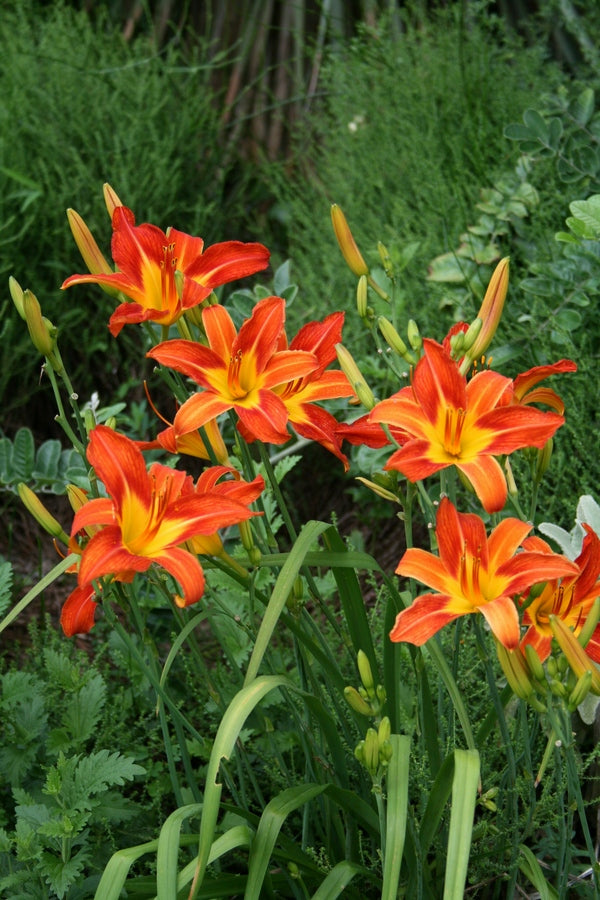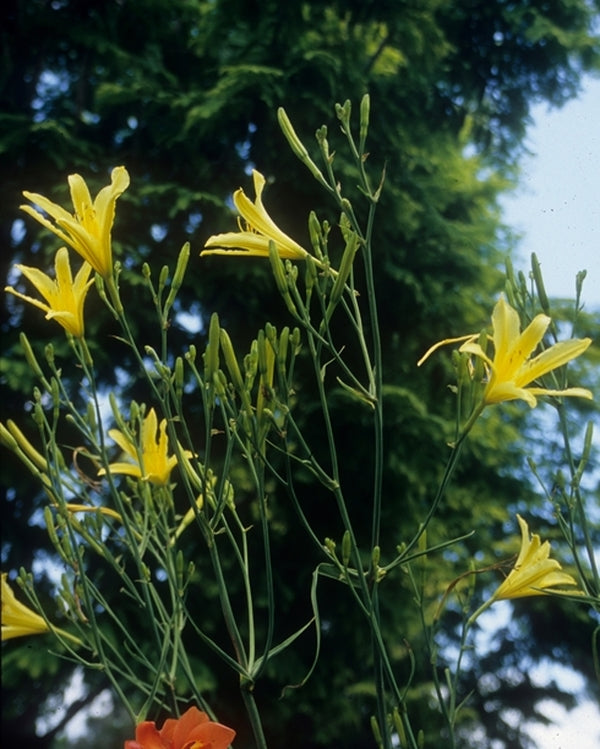The following article is part of a series geared toward entry-level gardeners. For deep dives into a variety of perennials that we have sold over the decades, visit our archive of in-depth perennial articles written by Tony Avent, Dr. Patrick McMillan, and other Plant Delights and JLBG experts. We also have transcripts of our Gardening Unplugged videos, recorded during our Open Nursery and Garden Days, that have great information for gardeners of all experience levels.
If you're looking to add a splash of vibrant color and beauty to your garden, Hemerocallis, commonly known as daylilies, are an excellent choice. These perennial flowers are favored by gardeners for their hardiness, low maintenance requirements, and stunning blooms that last for just one day but are replaced by numerous new flowers over the blooming season. Whether you're a seasoned gardener or just starting, here's a comprehensive beginner's guide to growing Hemerocallis with essential tips for planting and care.
Understanding Hemerocallis
Hemerocallis are native to Asia, and they belong to the family Hemerocallidaceae. The name "Hemerocallis" comes from two Greek words, "hemera" meaning day and "kallos" meaning beauty, referring to the flowers' short-lived beauty. These herbaceous perennials come in various colors, shapes, and sizes, making them a versatile addition to any garden landscape.
Hemerocallis 'Striped Fantastic' PP 23,154
Choosing the Right Location
Daylilies thrive in full sun to partial shade, so it's essential to select a location in your garden that receives at least 6 hours of direct sunlight each day. While they can tolerate some shade, too much shade can result in reduced flower production and weaker plants. Aim for a spot with well-draining soil as they dislike waterlogged roots.
Planting Hemerocallis
Planting daylilies is a straightforward process, and they can be planted either in the spring or fall. Follow these steps for successful planting:
Hemerocallis 'Chancellor'
1. Prepare the Soil
To prepare the soil:
- Clear the planting area: Remove any existing weeds, rocks, or debris from the planting area. Daylilies will compete with weeds for nutrients, so it's essential to start with a clean slate.
- Loosen the soil: Using a shovel or garden fork, loosen the soil to a depth of about 12 to 15 inches. This helps improve drainage and allows the daylily roots to establish more easily.
- Amend the soil: Add organic matter to enrich the soil. Compost, well-rotted manure, or peat moss are excellent choices. Mix the organic matter into the soil thoroughly to ensure an even distribution.
2. Digging the Hole
Proper hole preparation ensures that the daylily plant has enough space for its roots to grow and spread comfortably. When digging the hole, follow these guidelines:
Hemerocallis citrina 'Yao Ming'
- Hole size: The hole should be approximately two times the width of the root ball of the daylily. If you're planting multiple daylilies, make sure to space the holes according to the recommended spacing for the specific cultivars you are planting.
- Hole depth: The depth of the hole should be such that the crown of the daylily plant (the area where the leaves meet the roots) is level with the soil surface. Planting the crown too deep can lead to rot, while planting it too high can expose the roots, causing the plant to dry out.
3. Spacing
Daylilies have a clumping growth habit, and they can expand in size over time. It's essential to provide them with enough space to grow and spread without overcrowding each other. The recommended spacing between daylilies varies depending on the cultivar and its ultimate size. Giving the plants enough room to grow not only helps with their overall health but also enhances the visual appeal of your garden.
- For smaller daylily varieties, space them about 1 to 2 feet apart.
- For larger daylilies or those with a spreading habit, aim for a spacing of 2 to 3 feet.
4. Planting
Now that you've prepared the soil and dug the holes, it's time to plant your daylilies:
- Gently remove the daylily plant from its nursery container. If the roots are pot-bound (circling around the bottom of the pot), loosen them slightly to encourage outward growth.
- Place the daylily in the center of the hole and spread the roots outwards.
- Fill the hole with soil, gently firming it around the plant as you go to remove any air pockets.
- Water the newly planted daylilies thoroughly to help settle the soil and hydrate the roots. Proper watering at this stage is crucial for the plant's establishment.
Hemerocallis 'August Flame'
Watering
While daylilies are relatively drought-tolerant, they still require consistent moisture, especially during their active growing season. Water deeply once a week, providing around 1 inch of water each time. Adjust the frequency based on rainfall and local weather conditions.
Mulching
Adding a layer of organic mulch around your daylilies can be beneficial. Mulch helps retain soil moisture, prevents weed growth, and moderates soil temperature. Apply 2 to 4 inches of mulch around the base of the plants, leaving a few inches of space around the stems to avoid rot.
Fertilizing
Daylilies are not heavy feeders, but they will benefit from a light application of organic fertilizer in the spring. Avoid over-fertilizing as it can lead to excessive foliage growth with fewer flowers.
Deadheading
Deadheading, the process of removing spent flowers, encourages the plant to produce more blooms and keeps the garden looking tidy. Snip off the faded flowers using clean and sharp garden scissors or pruners.
Hemerocallis altissima 'Flyover'
Division
Hemerocallis plants will multiply over time, forming clumps. Every few years, it's beneficial to divide the clumps to maintain plant vigor and promote more flowering. The best time to do this is in the early spring or fall when the plant is not in its active growth phase.
Pests and Diseases
One of the reasons daylilies are so popular is because they are relatively resistant to pests and diseases. However, they can occasionally be affected by aphids, spider mites, or slugs. Regularly inspect your plants and take appropriate measures if you notice any infestations. Removing dead leaves and debris from around the plants can also help prevent potential disease issues.
By following these simple tips for planting and care, you can enjoy the beauty of Hemerocallis in your garden and experience the joy of watching these stunning flowers bloom day after day throughout their flowering season. Happy gardening!

